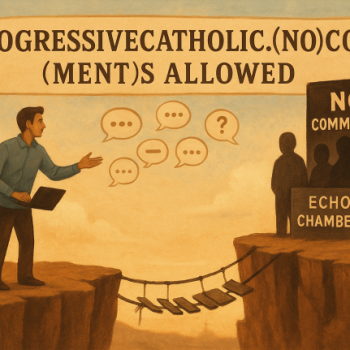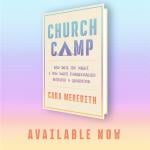Chicago Sun Times
April 16, 2006 Sunday, Final Edition
Copyright 2006 Chicago Sun-Times, Inc. All Rights Reserved Section: NEWS; Pg. A08
Length: 951 words
Byline: Cathleen Falsani, The Chicago Sun-Times
Breakthrough! The Bible for Young Catholics is filled with groovy graphics and colorful illustrations of characters who look like they’d be more at home in a Japanese anime cartoon than in the pages of the Greatest Story Ever Told.
“Pray it. Study it. Live it,” a slogan on the new Bible’s cover commands from beneath an angular, saucer-eyed Moses holding a couple of stone tablets covered in glowing text.
This is not your grandmother’s Bible. Well, at least it doesn’t look like hers.
Breakthrough, published last month by St. Mary’s Press and aimed at “tween” (10- to-12-year-old) Catholic readers, is the latest entry in an ever-expanding multitude of niche-marketed Bibles competing for readers of all ages.
“I like to call them ‘bridge Bibles,’ ” said Brian Singer-Towns, Breakthrough‘s editor. “They bridge the world of the Scripture writers and our modern world today.”
There are literally hundreds of English versions of the Christian Bible on the market, ranging from the traditional to the trendy.
There’s a Bible for brides and another for dads. You can get the Old and New Testament bound in Moroccan leather with gold gilded edges, or download them as MP3 files onto your iPod.
The New International Version, a k a the “NIV,” a contemporary-language version first published in 1978, is the best-selling Bible in the world, having edged out the venerable 395-year-old King James Version in the late 1980s. But the King James, with its “thees and thous” is holding its own — still usually ranking in the top three.
How did we wind up with so many different kinds of Bibles?
“The history of the versions is a history of doctrine and dispute,” said Margaret Mitchell, a professor of New Testament and early Christian literature at the University of Chicago.
Arguments about what should be included in the Bible and how it should be written are as old as the Scriptures themselves, which is why there is no single answer to the question, “Which Bible translation is the best?”
“The reason we continue to produce new translations is because we continue to get insights into the biblical world, into the meaning of biblical languages,” said Robert Hodgson, dean of the Nida Institute for Biblical Scholarship at the American Bible Society in New York.
There are two basic philosophies of Bible translation: word-for-word and thought-for-thought. In the former, translators begin with the original Greek or Hebrew and try to find the most literal English equivalent.
In thought-for-thought translation, which has been the more popular mode in the last 50 years, scholars also begin with the texts in their original languages but concentrate less on literal accuracy and more on readability by finding corresponding thoughts or phrases in English. The NIV is a thought-for-thought translation.
A third approach begins with an existing English translation to create a new version, resulting in a “paraphrase” rather than a true translation. One wildly popular example of a paraphrase is Eugene Peterson’s The Message. It has sold more than 10 million copies since 1993.
Leland Ryken, an English professor at Wheaton College and author of Choosing a Bible: Understanding Bible Translation Differences, prefers word-for-word translations — and he’s a fan of the good old King James.
“I would choose a translation that employs an English vocabulary that is dignified and beautiful, and that is expressed in rhythm that flows smoothly in oral reading,” Ryken said.
When choosing a Bible, ask yourself what you want to use it for, said Paul Caminiti, vice president and publisher of Zondervan, the largest publisher of Bibles in the world, selling about 8 million copies every year.
“If you’re a person who is wanting to take a deep dive into the Bible, you’re probably going to want a study Bible,” he said.
Lately, the most popular Bible (among more than 800 in stock) at John’s Christian Store in Carol Stream has been Zondervan’s new Archaeological Study Bible, said owner Mark Gross. It’s a monster — weighing in at 4.3 pounds — with more than 500 color photos and 8,000 study notes.
So what’s the next big thing?
The Bible Experience is a good guess. It’s a 70-hour audio recording of the entire Bible performed by more than 80 African-American celebrities, including Blair Underwood as Jesus and Denzel Washington reading sexy passages from Song of Songs.
Zondervan expects MP3 and CD copies of the New Testament Experience to hit stores in September. PAGES TO TURN TO
There’s no easy answer to the question, “Which Bible should I choose?” But there are a number of Web sites that can help.
Here are a few:
www.aquinasandmore.com
– Catholic Pages: Lists dozens of Catholic Bibles and compendiums, including niche Bibles for various age groups, and offers helpful descriptions of Bible translations and editions.
www.bibles.com
– American Bible Society: Both a retail and informational site that allows you to search by translation and also offers short histories and descriptions for 16 English translations of the Bible.
www.biblegateway.com
– Gospel Communications: Allows you to search 50 Bible versions in 35 languages; also offers audio files of Bible passages.
www.cbaonline.org
– Christian Booksellers Association: Posts updated lists of best-selling Bibles and Bible study texts.
www.christianbook.com
– Christian Book Distributors: Lists more than 4,000 Bible titles and allows you to search for Bibles by translation, publisher, audience, font color, binding, layout and price.
www.zondervan.com
– Zondervan Publishers: Zondervan publishes more Bibles than any other publishing house in the world. Its searchable Web site lists dozens of Bibles and Bible study texts, with descriptions of each.















